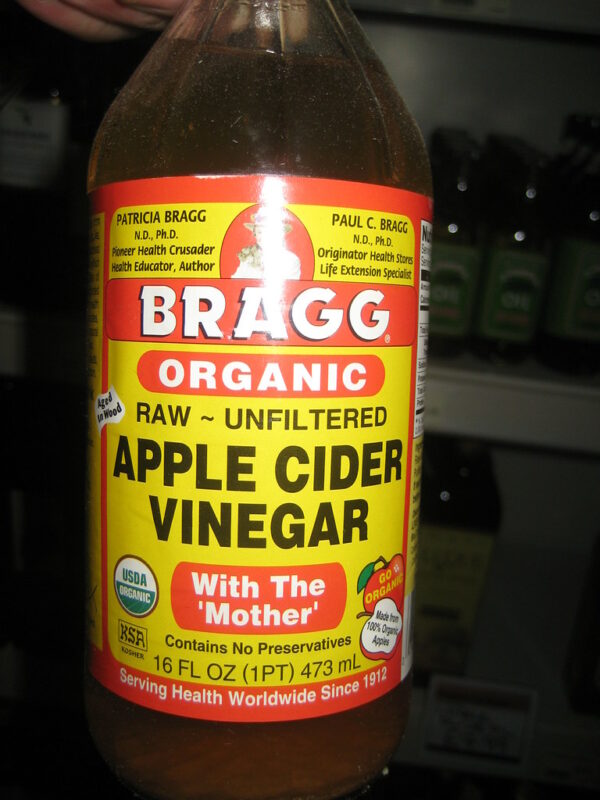As the weather warms up and our windows start to open, there’s one pesky little creature that tends to invade our spaces: the gnat. These tiny flying insects can be a real nuisance, especially when they decide to swarm around our fruits, plants, or even our faces.
But don’t worry! Today, we’re diving into the world of DIY gnat traps to help you reclaim your space. These traps are not only effective but also easy to make with items you probably already have at home. Let’s take a closer look at some unique and practical gnat trap ideas.
Apple Cider Vinegar Trap

One of the most popular and effective homemade gnat traps involves apple cider vinegar. Its potent aroma attracts gnats, making it a go-to solution for many households. Follow these steps to craft your own apple cider vinegar trap:
What You’ll Need:
Apple cider vinegar: This vinegar’s fruity smell mimics the scent of ripening fruit, drawing gnats in.
Dish soap: A few drops will break the surface tension of the vinegar, trapping the gnats when they try to land.
Sugar: Adding sugar intensifies the appeal of the trap.
A jar or bowl: This will contain your gnat trap.
Plastic wrap: This will create a barrier to keep the gnats from escaping.
Setup Instructions
Combine Ingredients: In your jar or bowl, pour enough apple cider vinegar to fill it halfway. Add a tablespoon of sugar and a couple of drops of dish soap to the vinegar. Mix gently until the sugar dissolves.
Cover with Plastic Wrap: Tightly cover the top of the jar or bowl with plastic wrap, ensuring there are no gaps where gnats could escape.
Poke Holes: Use a toothpick or a similar tool to poke several small holes in the plastic wrap. The holes should be just big enough for the gnats to enter but small enough to prevent them from easily escaping.
Place Strategically: Set your trap in areas where you’ve noticed gnat activity, such as near fruit bowls, houseplants, or sinks. Over time, you’ll notice gnats trapped in the solution!
Why This Works
The combination of attractive scents from the apple cider vinegar and sugar lures gnats in, while the dish soap acts as a trap. Once they land on the liquid, they cannot escape due to the disrupted surface tension. It’s a simple yet effective way to manage a gnat problem.
Red Wine Trap
If you’re a wine lover, you probably have a bottle or two lying around that you don’t mind sacrificing for a good cause. The red wine trap is another effective method for catching those pesky gnats.
Here’s What You’ll Need to Set Up This Trap:
Red wine (a cheap one will do): The fermented aroma of wine is quite attractive to gnats.
Dish soap: Just like with the apple cider vinegar, dish soap will prevent gnats from escaping.
A container (cup/jar): Any cup or jar will suffice, as long as it can hold liquid.
Setup Instructions
Pour the Wine: Take a cup or jar and pour about an inch of red wine into it.
Add Dish Soap: Add just a few drops of dish soap to the wine. Stir very gently to avoid creating too much foam.
Position Your Trap: Place this trap in a location frequented by gnats, such as your kitchen counter or near your fruit basket.
Enjoy the Results: As with the apple cider vinegar trap, you’ll see gnats drawn to the scent of the wine and unable to escape once they hit the surface.
Why This Works
Gnats are naturally attracted to the fruity and fermented aromas of wine. The soap added to the trap serves the same purpose as in the previous traps, ensuring that once the gnats land, they’ll be unable to break free. It’s a sophisticated way to make use of something you might otherwise discard!
Ripe Fruit Trap
If you have overripe fruit that you don’t plan to eat, don’t throw it away! Instead, you can turn it into an effective gnat trap. The scent of decaying fruit is irresistible to gnats, making this an excellent homemade trap.
Here’s What You’ll Need:
Overripe fruit (banana or melon works well): The more pungent and decayed, the better!
Plastic wrap: This will help contain the gnats.
A container: Choose a bowl or jar that can house the fruit.
Setup Instructions
Prepare the Fruit: Take your overripe fruit and place it in your bowl or jar. You can even mash it slightly to release more odor.
Cover with Plastic Wrap: Stretch plastic wrap tightly over the top of the bowl, just like you did with the previous traps.
Poke Small Holes: Punch a few small holes in the plastic wrap to allow the gnats to enter.
Monitor: Place the trap in a spot where gnats are commonly seen, and watch them swarm to the scent of the ripe fruit.
Why This Works
The decaying fruit emits odors that simulates fermentation or decay, which are highly attractive to gnats. They enter through the holes, but once inside, they find it difficult to escape due to the plastic wrap barrier. This method not only captures gnats but also prevents waste!
Sticky Trap
Sticky traps can be particularly effective for catching gnats without the need for any liquid. The bright yellow color attracts these insects, drawing them to the sticky surface where they can get trapped.
This is What You Will Need to Try This Trap:
Yellow construction paper: Gnats are especially attracted to the color yellow.
Honey or syrup: This will serve as the sticky substance to trap the gnats.
A popsicle stick or similar for support: To make sure your trap stands up.
Setup Instructions
Cut the Paper: Cut your yellow construction paper into strips or squares, depending on your preference, making sure they are large enough to catch gnats.
Apply Sticky Substance: Spread honey or syrup over one side of the yellow paper. Don’t skimp on it; a good layer will ensure gnats stick to it once they land.
Create Support: Attach the popsicle stick to the bottom of your yellow strip to give it some support. You might need to use tape or glue for a sturdy hold.
Hang or Place: Position the sticky traps around your home, particularly near your plants or areas where you often see gnats.
Why This Works
The bright yellow color draws gnats to the trap, while the sticky honey or syrup effectively catches them upon landing. This trap requires minimal preparation and cleanup, making it an easy and effective solution for pesky infestations.
Candle Trap
This trap brings a more creative approach to combating gnats! By using light and water, you can entice and trap gnats effectively.
What You’ll Need:
A candle: You can use any type of candle, such as a tea light or votive candle.
A candlestick: This will help support the candle upright.
A plate: The plate will catch any water and trapped gnats.
Water: This will create an environment where gnats are deterred.
Setup Instructions
Prepare Your Plate: Place the plate on a flat surface. You’ll want it to be in an area that gnats frequent.
Add Water: Pour a shallow layer of water onto the plate—enough to catch gnats but shallow enough that it won’t extinguish the candle.
Insert the Candle: Place the candle in the center of the plate. Make sure the water doesn’t spill into the candle.
Light the Candle: Carefully light the candle, letting the flame attract the gnats.
Observe: Over time, the warmth from the candle and the light will draw the gnats in, causing them to drown in the water surrounding the candle.
Why This Works
The heat and light of the candle create a warm environment that attracts gnats, while the water acts as a barrier to trap them. This method is an elegant solution that provides ambiance while solving a pest problem.
Conclusion
Dealing with gnats can be frustrating, but the good news is that you have several easy and effective DIY traps at your fingertips. Whether you choose the apple cider vinegar, red wine, ripe fruit, sticky paper, or candle traps, you can reclaim your living spaces without resorting to harsh chemicals.









